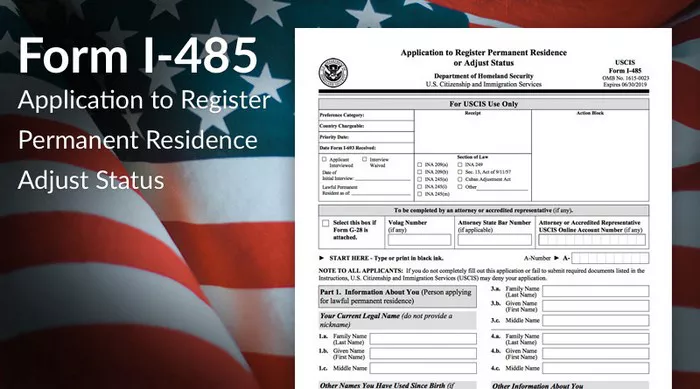The I-485 petition, also known as the Application to Register Permanent Residence or Adjust Status, is a crucial step in the process of obtaining lawful permanent residency in the United States. This application allows eligible individuals to apply for a Green Card without having to leave the country. Understanding the intricacies of the I-485 petition is essential for those seeking permanent residency in the U.S. This comprehensive guide aims to provide a detailed overview of the I-485 petition process, including eligibility requirements, application procedures, common pitfalls, and tips for a successful application.
Eligibility Requirements
Before applying for an I-485 petition, it is essential to ensure that you meet the eligibility criteria set forth by U.S. Citizenship and Immigration Services (USCIS). The eligibility requirements may vary depending on the immigration category under which you are applying for adjustment of status. Some common eligibility criteria include:
Eligibility Categories: You must belong to an eligible immigration category, such as family-based immigration, employment-based immigration, refugee or asylee status, diversity visa lottery winners, or special immigrant categories.
Priority Date: For certain categories, such as employment-based immigration, you must have a current priority date, as determined by the Visa Bulletin issued by the U.S. Department of State.
Maintaining Lawful Status: You must have entered the United States legally and maintained lawful immigration status throughout your stay. Exceptions may apply for immediate relatives of U.S. citizens.
Admissibility: You must be admissible to the United States, meaning you do not have any disqualifying factors such as criminal convictions, immigration violations, or health-related grounds of inadmissibility.
Eligibility Documentation: You must provide supporting documentation to prove your eligibility, such as birth certificates, marriage certificates, employment letters, or proof of refugee or asylee status.
Meeting these eligibility requirements is crucial for a successful I-485 petition. Failure to meet any of these criteria may result in delays or denial of your application.
Application Procedures
Once you have determined your eligibility for the I-485 petition, you can proceed with the application process. The following steps outline the general procedures for filing Form I-485:
Gather Required Documents: Collect all necessary supporting documents, including Form I-485, passport-style photos, birth certificates, marriage certificates (if applicable), employment letters (if applying based on employment), and any other relevant documentation.
Complete Form I-485: Fill out Form I-485 accurately and truthfully. Provide all required information and ensure that the form is signed and dated.
Submit Form I-485: Mail the completed Form I-485 along with the required supporting documents to the appropriate USCIS address. Include the necessary filing fee or request a fee waiver if eligible.
Biometrics Appointment: After receiving your application, USCIS will schedule a biometrics appointment at a local Application Support Center (ASC). Attend the appointment to provide fingerprints, photographs, and signature for background checks.
Interview (if required): Depending on your immigration category and individual circumstances, USCIS may schedule an interview to further evaluate your eligibility for adjustment of status. Prepare thoroughly for the interview and bring any requested documentation.
Wait for Decision: USCIS will review your application, conduct background checks, and make a decision on your I-485 petition. You will receive a notification of approval or denial by mail.
It is essential to follow all instructions carefully and provide accurate information to avoid delays or potential denial of your application.
Common Pitfalls and Challenges
While applying for an I-485 petition, applicants may encounter various pitfalls and challenges that could affect the outcome of their application. Some common issues to be aware of include:
Incomplete or Inaccurate Documentation: Failing to provide all required documents or submitting inaccurate information can lead to delays or denial of your application. Double-check all forms and supporting documents before submission.
Failure to Maintain Legal Status: Applicants must maintain lawful immigration status throughout their stay in the United States. Any violations of immigration laws or status can impact eligibility for adjustment of status.
Criminal History: Certain criminal convictions or immigration violations may render applicants inadmissible to the United States. It is essential to disclose any criminal history and seek legal advice if necessary.
Health-Related Grounds of Inadmissibility: Applicants with certain medical conditions may be deemed inadmissible to the United States. Seek guidance from a qualified immigration attorney if you have concerns about health-related grounds of inadmissibility.
Delays in Processing: USCIS processing times can vary, and delays are not uncommon. It is essential to monitor the status of your application and follow up with USCIS if necessary.
Navigating these pitfalls and challenges requires careful preparation and attention to detail. Seeking guidance from an experienced immigration attorney can help ensure a smoother application process and increase the likelihood of a successful outcome.
Tips for a Successful Application
To increase the chances of approval for your I-485 petition, consider the following tips:
Seek Legal Advice: Consulting with an experienced immigration attorney can provide valuable guidance and assistance throughout the application process.
Prepare Thoroughly: Gather all required documents and ensure they are accurate and up-to-date before submitting your application.
Maintain Legal Status: Adhere to all immigration laws and maintain lawful immigration status throughout your stay in the United States.
Be Honest and Transparent: Provide truthful and accurate information on your application and during any interviews with USCIS.
Follow Up: Monitor the status of your application and follow up with USCIS if there are any delays or concerns.
By following these tips and guidelines, you can increase the likelihood of a successful outcome for your I-485 petition and move closer to obtaining lawful permanent residency in the United States.
Conclusion
In conclusion, the I-485 petition is a critical step in the process of obtaining permanent residency in the United States. Understanding the eligibility requirements, application procedures, common pitfalls, and tips for success can help applicants navigate the process more effectively. By seeking guidance from immigration professionals, preparing thoroughly, and adhering to all requirements, applicants can increase their chances of a successful outcome and realize their goal of obtaining permanent residency in the United States.


